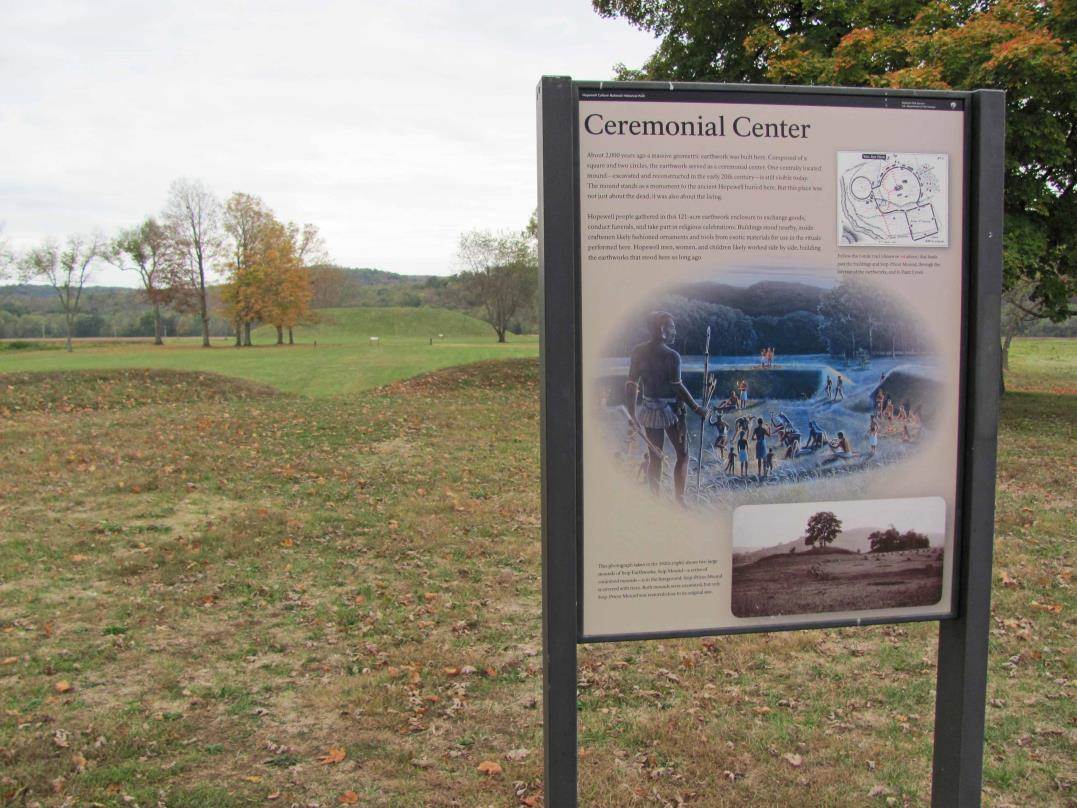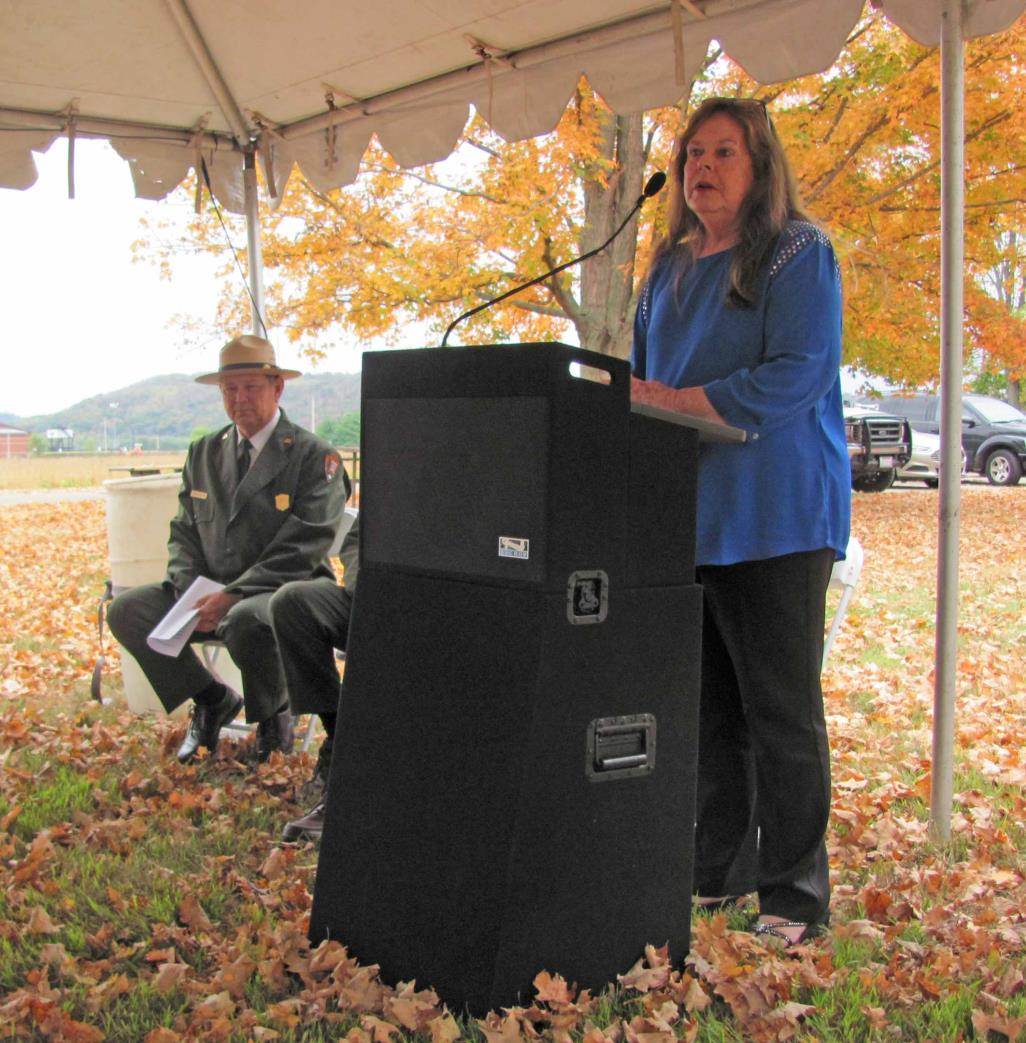
Seip Mound, visible in the background, is the third largest mound ever built by the Hopewell culture.
Yesterday I attended a ceremony celebrating the
formal transfer of Seip Mound to
Hopewell Culture National Historical Park. This transfer is an acknowledgement that the amazing Seip Mound could be more effectively managed and interpreted as a part of the system of Hopewellian earthworks in Ross County already encompassed within the boundaries of the national park — including the largest portion of the
geometric earthworks at Seip. Glenda Greenwood, president of the Board of Trustees of the Ohio History Connection, presided over the ceremony and in her remarks observed that “the Ohio History Connection has had a long and productive association with the National Park Service, including managing these earthworks, working together toward World Heritage Inscription for the
Hopewell Ceremonial Earthworks and in many other joint endeavors as well… This is such a remarkable collaboration and we deeply appreciate all that the National Park Service has done and continues to do to encure the preservation of these sites.”

Chief Glenna Wallace of the Eastern Shawnee Tribe of Oklahoma delivers her remarks. Dean Alexander, superintendent of Hopewell Culture National Historical Park, is seated on the left.
of the Eastern Shawnee Tribe of Oklahoma attended the ceremony. She spoke of the deep connection she and her tribe feels for the land — both the landscape of southern Ohio, their former homeland, and the land of which the monumental earthworks were constructed. She said that the Eastern Shawnee does not claim to have been the builders of the earthworks, but they were the stewards of that ancient legacy for a time and still feel a responsibility to help protect and cherish it. In my remarks, I noted that it took unprecedented levels of cooperation for the dispersed communities of the Hopewell people to have created these remarkable earthworks and that the transfer of Seip Mound to Hopewell Culture National Historical Park was a testament to the Ohio History Connection’s commitment to this spirit of cooperation. Brad Lepper

